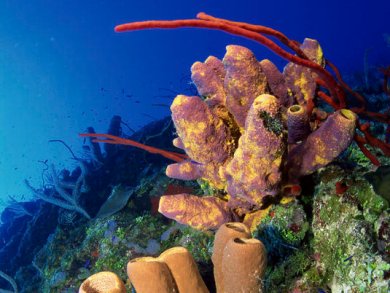Multicellular organisms, such as sea sponges, are able to produce minerals endowed of complex nanostructures. Calcareous sponges, for example, form calcite spicules which protect them from predators. These spicules possess unique optical and mechanical properties which challenges the synthesis of their artificial counterparts.
Using the sponge’s protein silicatein-α, Filipe Natalio, Johannes Gutenberg University, Mainz, Germany, and colleagues synthesized calcium carbonate nanocrystals which resemble natural spicules, such as those produced by the calcareous sponges Sycon sp. The researchers demonstrated that silicatein-α guides the spicules’ self-assembly and provides them with unusual features. The artificial minerals could, in fact, be U-shaped without breaking. Moreover, they were able to transmit light waves even when bent. These synthetic spicules were, thus, superior to their natural counterparts.
- Flexible Minerals: Self-Assembled Calcite Spicules with Extreme Bending Strength,
F. Natalio, T. P. Corrales, M. Panthöfer, D. Schollmeyer, I. Lieberwirth, W. E. G. Müller, M. Kapp, H. Butt, W. Tremel,
Science 2013, 339(6125), 1298–1302.
DOI: 10.1126/science.1216260




